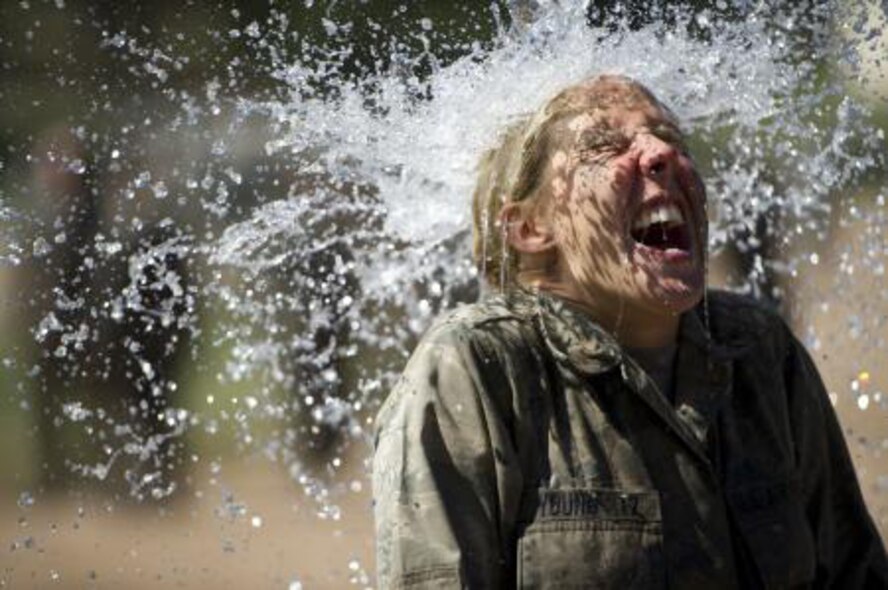By Karen Parrish
American Forces Press Service
WASHINGTON, Sept. 10, 2013 – The credible threat of U.S. military force in Syria is critical to showing the world that chemical weapons use is unacceptable, President Barack Obama said in a speech to the nation tonight, but he added that he has asked Congress to postpone a vote authorizing such action.
The commander in chief noted he has asked U.S. military forces to stay ready to conduct the limited strikes he has proposed, which would aim to reduce Assad’s chemical weapons stocks and means of delivering them without putting U.S. boots on the ground.
U.S. officials and others in the international community are now pursuing a last-ditch effort to disarm Bashar Assad’s regime of the prohibited weapons, Obama said, including the sarin gas his forces used against Syrian civilians Aug. 21, killing 400 or more children among the more than 1,400 total dead.
“We know the Assad regime was responsible,” the president said. “In the days leading up to Aug. 21, we know that Assad's chemical weapons personnel prepared for an attack. … They distributed gas masks to their troops. Then they fired rockets from a regime-controlled area into 11 neighborhoods that the regime has been trying to wipe clear of opposition forces. Shortly after those rockets landed, the gas spread, and hospitals filled with the dying and the wounded.”
Over the past two years, Obama said, “what began as a series of peaceful protests … has turned into a brutal civil war. Over 100,000 people have been killed. Millions have fled the country.”
He has thus far resisted calls for military action, the president said, “because we cannot resolve someone else's civil war through force, particularly after a decade of war in Iraq and Afghanistan.”
The Aug. 21 attack changed that calculus, the president said.
“The images from this massacre are sickening: men, women, children lying in rows, killed by poison gas, others foaming at the mouth, gasping for breath,” he said. “A father clutching his dead children, imploring them to get up and walk.”
The world saw proof “in gruesome detail” of the terrible nature of chemical weapons, Obama said, “and why the overwhelming majority of humanity has declared them off-limits, a crime against humanity and a violation of the laws of war.”
Chemical weapons were used in both world wars, the president said. “Because these weapons can kill on a mass scale, with no distinction between soldier and infant, the civilized world has spent a century working to ban them,” he added, noting that 189 governments, representing 98 percent of humanity, now prohibit the use of chemical weapons.
Obama said he’s cautiously hopeful about current international efforts involving Syria’s closest ally, Russia, to remove and ultimately destroy Syria’s chemical arsenal. He said he is sending Secretary of State John F. Kerry to meet his Russian counterpart Sept. 12, and that he will continue his own discussions with Russian President Vladimir Putin.
The president said he also has spoken to leaders of France and the United Kingdom, “and we will work together in consultation with Russia and China to put forward a resolution at the U.N. Security Council requiring Assad to give up his chemical weapons and to ultimately destroy them under international control.”
The United States will give U.N. inspectors the opportunity to report their findings about what happened Aug. 21, “and we will continue to rally support from allies from Europe to the Americas, from Asia to the Middle East, who agree on the need for action,” the president said.
If military strikes are ultimately required, Obama said, they will be decisive.
“The United States military doesn't do pinpricks,” he said. “Even a limited strike will send a message to Assad that no other nation can deliver.”
The president also expressed his gratitude to U.S. service members and their families. “Tonight I give thanks, again, to our military and their families for their incredible strength and sacrifices,” he said.
Obama said he doesn’t believe the United States should remove another dictator with force, as it did in Iraq. “But a targeted strike can makes Assad -- or any other dictator -- think twice before using chemical weapons,” he added.
U.S. ideals and principles, as well as national security, are at stake in Syria, the president said.
“Terrible things happen across the globe, and it is beyond our means to right every wrong, but when with modest effort and risk we can stop children from being gassed to death and thereby make our own children safer over the long run, I believe we should act,” he said.
“That's what makes America different,” the president concluded. “That's what makes us exceptional. With humility, but with resolve, let us never lose sight of that essential truth.”













